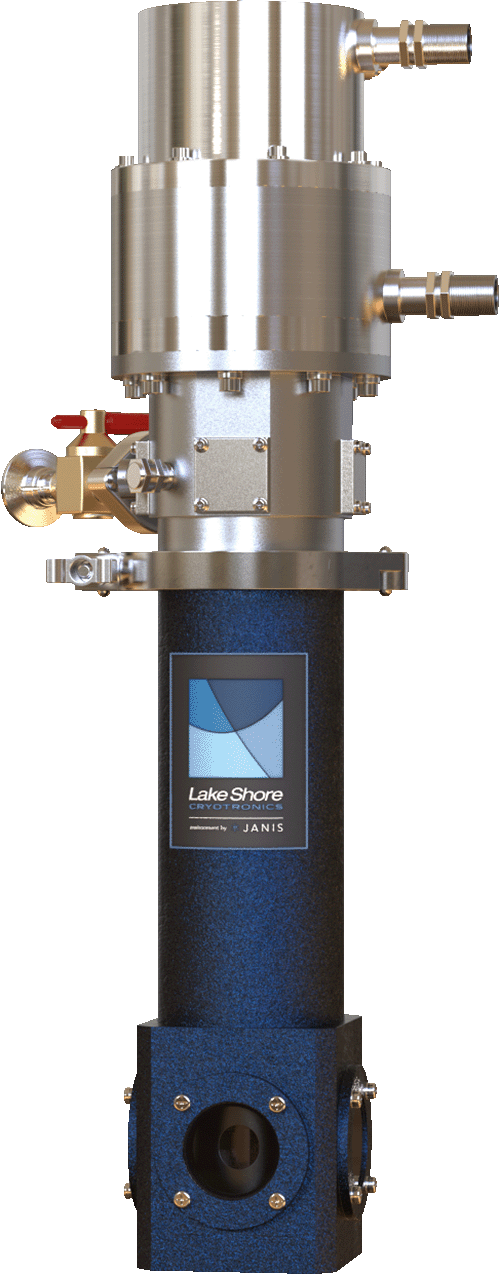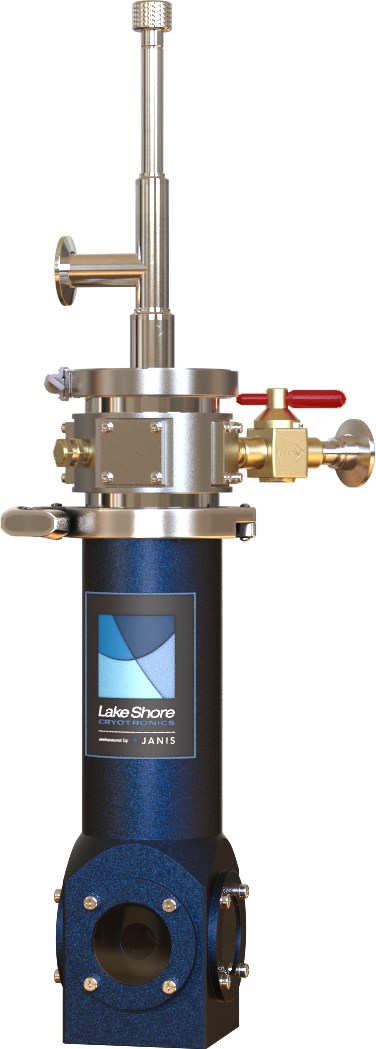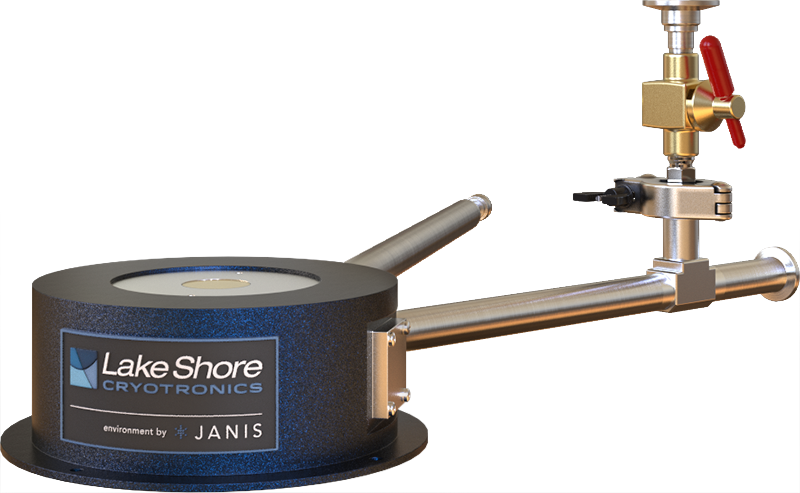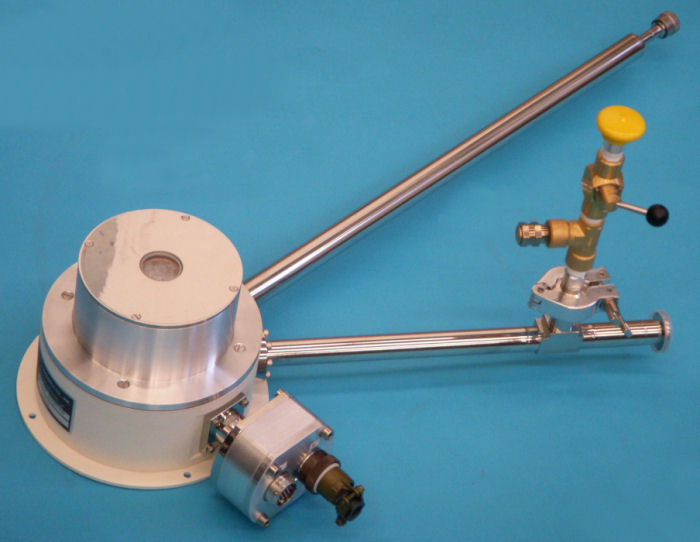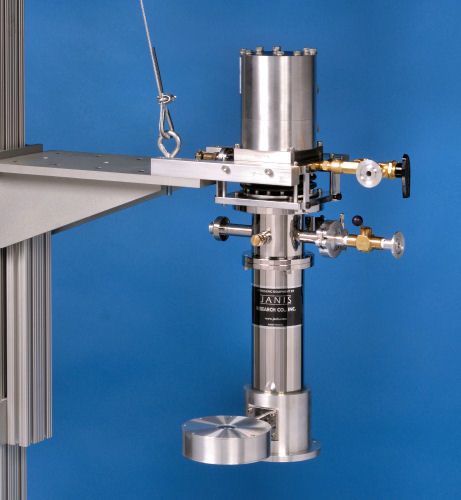Applications | Raman spectroscopy
Raman spectroscopy is a purely optical experiment. The sample is cooled to cryogenic temperatures under a vacuum and exposed to radiation, usually in the visible spectrum. This radiation causes the atoms in the sample to enter an excited state. When the atoms return to a lower energy state, they emit radiation, which is measured by a detector. This luminescence yields a great amount of information about the electronic structure of the sample.
While Raman measurements can be performed at any temperature range, performing Raman measurements at cryogenic temperatures can yield information about low energy states that would otherwise be hidden by thermal effects at room temperature.
For the purpose of selecting a cryostat, it is useful to separate Raman measurements into two categories: Macro-Raman (or just Raman) and Micro-Raman.
Standard macro-Raman measurements are performed on bulk samples. The optics used to collect the PL signal do not necessarily need to be very close to the sample, and the vibration levels with our standard open and closed-cycle systems are generally acceptable.
Most standard Lake Shore optical cryostats that cool the sample in a vacuum environment are suitable for Raman measurements. Closed-cycle refrigerator vacuum cryostats are a great choice for cryogen-free operation.
If you prefer a lower-cost system that uses LHe, the continuous flow ST-100 Series cryostats are the most affordable open-cycle LHe systems.
Raman measurements are sensitive to the polarization of the excitation beam. This places one additional requirement on Raman window materials — they cannot be birefringent.
Birefringent window materials may alter the polarization of light that passes through them, so these materials are unacceptable for Raman spectroscopy. This means that crystalline materials such as sapphire, diamond, and crystalline quartz should not be used in Raman systems.
Our standard fused quartz (when fluorescence in the UV is not important) and UV-grade fused silica (if fluorescence in the UV is unacceptable) windows are ideal for Raman spectroscopy.
When a cryostat is combined with a commercially available spectrometer, a more compact window block may be necessary to fit the cryostat in the sample compartment. In this case, adapting the 10 K CCS-300 Series is recommended. The ST-300 would be the choice for an open-cycle cryostat.
When performing micro-Raman measurements on very small samples, such as quantum dots, the experimental requirements are more demanding. High positional stability and low vibration are absolutely necessary in order to keep the optics focused on the sample throughout the course of the measurement.
The Lake Shore ST-500 is the most popular choice among our open-cycle systems for micro-Raman measurements. With a vibrational amplitude guaranteed to be ±15 nm or less (with proper mounting), the ST-500 has the lowest vibrational amplitude of all Lake Shore open-cycle systems. A specially designed heat exchanger with the cryogen inlet and vent ports pulling in opposite directions results in the lowest positional drift upon cooldown.
The optical signal in micro-Raman is typically collected using a microscope objective with a high numerical aperture and a short working distance of a few millimeters at most. Therefore, the sample must also be placed very close to the window.
The distance from the sample holder to the inner surface of the window is specified when ordering the ST-500. Additional sample holders may be ordered for different sample-to-window distances. We recommend a distance of at least 2 mm between the sample and the window to prevent the window from cooling and collecting condensation. However, some microscope objectives require a shorter working distance. We will make the sample holder as close to the window as necessary, as long as our customers are aware that the window may get cold if the sample is less than 2 mm from the window.
Some commercially available Raman systems use a microscope for the sample mounting stage. The ST-500 will fit in many popular microscopes, but for some models, it may be too high or too large in diameter.
When a cryostat with a more compact profile is required, Lake Shore offers the ST-500-C (compact). The ST-500-C is built using the same design as the ST-500, so it has similar specifications for vibrational amplitude and positional drift. The ST-500-C does consume more LHe than the standard ST-500, so the long-term operating costs will be higher.
Scanning the surface of a sample may be useful in micro-Raman measurements. Lake Shore offers special configurations of the ST-500 that include nano-positioning stepper and scanner stages for ultra-precise positioning of the sample in the optical path.
The ST-500 is a very versatile system. The basic ST-500 can be easily converted from a micro-Raman setup into a different configuration for other experiments simply by changing sample holders, electrical feedthroughs, and top plates.
Micro-Raman in a closed-cycle cryostat presents additional challenges. The vibration amplitude of all closed-cycle cryocoolers is of the order of microns or tens of micrometers, which is usually unacceptable for micro-Raman measurements. The Lake Shore CCS-XG system is a special vibration-isolated cryostat, including a 10 K or 7 K closed-cycle cryocooler. While the vibration levels are known to be less than ±45 nm, the sample drift during cooldown is not as low as in the ST-500. The sample holder in the CCS-XG is connected to the cooling stage by an OFHC copper bar. This copper bar will contract towards the cryocooler during cooldown and expand away from it upon heating.
Contact us today for details of how our systems can be integrated into your laboratory.



